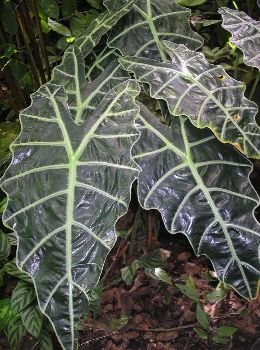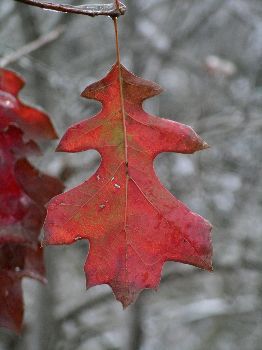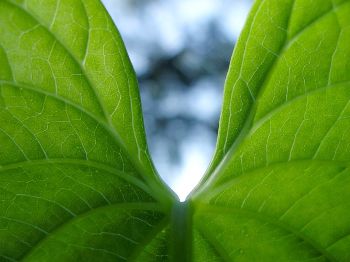
For the last ten days or so, this annual process of renewal has begun with such a falling of the tough, till now surviving, live oak leaves as often to sound like a steady, heavy rain. The masses of old leaves pile up or are blown into small drifts, and it is only with great effort that we get them all gathered for disposal or shredded down into small enough bits that they may aid in soil aeration and become a useful ingredient of the lawn's mulch.

Live oaks were likely so named because they retain their foliage when all about them deciduous trees are losing theirs, but I want to believe it is also a tribute to these never-say-die leaves that, unless specially treated to an unnatural grinding action, will persist intact for years, even in the warm towers of our compost bins. I would like to think that is how I shall hang on, against all that may assail form and function, though reason dictates for my flesh a harsher destiny. Live oaks are made of heartier and more permanent stuff than I. Indeed, some still living live oaks germinated when Europe was in the Dark Ages.
The canopies of ours, especially in satellite view, seem to dwarf the house and have provided in their own right habitat for many a creature, including squirrels, owls, doves, hawks, possums, lizards, bees, ants, oak leaf rollers, and nesting hummingbirds.
Leaves come in many amazing forms. Just in our third of an acre, we have thick, fibrous, spineless prickly pear cactus pads, sometimes nearly two inches thick and ten inches long. Cacti are another special case, though, for those seemingly leaf-like pads serve the purpose of leaves but are not. It is, instead, the spines of cacti (that have them) that come from the leaves of plants from which these bizarre plants have evolved. At other ends of the size or shape spectrums are duckweed, that may carpet a pond surface in tiny floating leaves, among the fastest growing living things (though kelp has them beat, adding at times a foot or so a day), but whose buds are barely millimeters in diameter. There are leaves that capture insects, so the diet may be supplemented with animal protein, as with our pitcher plants. And there are leaves so sensitive that with the slightest animal touch they may collapse, as with our acacia trees.
There are, of course, the major divisions between the plants, into evergreens (conifers), usually with narrow needles as the leaf form, and all the broad-leaf shrubbery or forests, whose leaves typically create the fall colors as their chlorophyll is reabsorbed, not long before they fall off in the final season of each year. Live oaks, though called "evergreens," are a form of non-deciduous, non-conifer broad leaf plant, one which, to further confuse things, sometimes has a short, sharp, needle-like spike at the end of the fairly flat, shiny leaf form.
 Our own largest leaves probably were those on one kind of elephant ear plant we had gathered from the banks of the San Marcos River, maybe 12-14 inches across. Among the thinnest "leafed" plants were a variety of horsetails we had, which, showing their early evolutionary origins, perhaps did not really possess true leaves at all, but soaked in sunlight through their silica-reinforced, coffee-stirrer-thin stems.
Our own largest leaves probably were those on one kind of elephant ear plant we had gathered from the banks of the San Marcos River, maybe 12-14 inches across. Among the thinnest "leafed" plants were a variety of horsetails we had, which, showing their early evolutionary origins, perhaps did not really possess true leaves at all, but soaked in sunlight through their silica-reinforced, coffee-stirrer-thin stems.
And there are bamboo leaves, banana tree leaves, leaves that make funny musical noises when we blow through them, leaves significant in religious observances, like palm fronds, leaves we eat, as with Popeye's spinach, leaves we brew or tell each other's fortunes by, leaves we can conceal ourselves in during youthful hide-and-seek games, stalks and leaves that aliens may flatten into mysterious, other-worldly designs in our cornfields, and ones Indians would chew for an energizing high, like coca leaves.
There are leaves we may snuggle and play in or leap onto in the great leaf mounds of autumn (usually best in temperate climes), leaves we cover the bases of our plants in to protect them from frosts, leaves we may be carried on for fun, as with cozy hay rides, leaves to put on our wounds, like Aloe, or from which we get many of our medicines.
And let's not forget leaves used to conceal certain parts in our statuary, or of ourselves once we had said our final "Goodbyes" to Eden's garden-like environment. Perhaps clothing derived from the many early people who, post-Eden, needed appropriately positioned coverings but were allergic to the rough, prickly leaves of the fig tree.
Then too, there are all the foliage mimicking insects, that masquerade so well as leaves, or the many snakes whose markings exactly replicate leaf litter.
Leaves, which absorb carbon dioxide and release oxygen and water vapor, are one of the main ways our entire planet seems to breath. In the process, they help to filter the atmosphere of pollutants. Leaves are useful in more prosaic ways as well. Dried and packed in bales, they can form the structures of our houses. Or we may add sails to them and float upon them across the sea, as early humans are thought to have done in some of their expansions into diverse islands and continents.

Pressed together, leaves can be made into crude writing surfaces, possibly a huge advance after scribes had for millennia needed to rely on chiseled stone to pass along their customers' Valentine and other greetings. A handful of leaves may have other, more basic uses as well, as anyone who has gone camping without a roll of Charmin can attest. Consider the plight of our ancestors before there were any rolls at all (let alone supermarkets or Wal-Marts). And of some poor entry level workers who had to try out the different kinds of leaves to see which performed these duties best under various conditions, especially after they were all dried out or in winter, for instance. No doubt pine needles were crossed off the mental list quite early, as with poison oak, ivy, and sumac.
Let us not go into all the uses made of smoked leaves, somewhere in the world extremely vital portions of the economy, diplomacy, and medicine (not to mention several decades of classic movies) down to the present. Speaking of products from leaves that have at times been smoked, industrial hemp, containing less than 1% psychoactive chemicals, could be used more profitably than corn for ethanol (as fuel), or than wood (as paper), and also makes a fine cloth (better than cotton) or an excellent rope.
Leaves are crucial to the interest and beauty of many of our landscapes and would justify their existences in this alone. Before there were leaves, the rocky or sandy vistas must have been dull indeed, but for a few soulless beings of no real consciousness or taste.
When Noah kept sending out the dove, he knew it was safe to depart the ark and repopulate the known world when she had brought him back a few leaves. It shall ever be so. When there cease to be leaves, we shall cease to be as well.
So let us celebrate our so leafy surroundings! (I must leave now to go talk to our plants.)